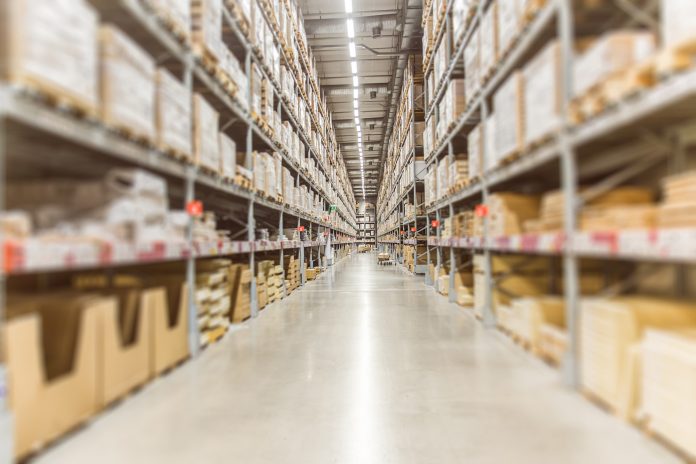The overall inventory management and logistics cost in the United States currently stand at $1.64 trillion. Businesses are seeking new ways of saving on recurrent expenditure. The need to save on costs is mainly due to skyrocketing transportation and storage expenses.
You must focus on sustaining the timely delivery of customer orders as a business. Nevertheless, this must be done while keeping check of the intermittent expenses.
Saving on costs may not always be possible. This concern is more so considering the tricky balance between customer expectations and the cost of fulfilling such demands.
It’s on this premise that order fulfillment has ultimately become a critical part of the logistical process. Are you looking for a more automated process for your business?
Why not check out a fulfillment center? Learn what they are and the many benefits!
What Is a Fulfillment Center?
A fulfillment center refers to a centralized location that supports the process of responding to customer orders. It picks, packages, and ships orders to the target markets at the behest of various firms.
Third-party logistics play an essential role in bridging the gaps in the supply chain. A fulfillment center is among the critical types of 3PL warehouses. Within such centers, the process of receiving, processing, and filling incoming orders is flawless.
A fulfillment center is a critical resource within a supply chain. Such centers enable a less hectic process of outsourcing inventory management services. Consolidating physical space as storage without incurring inventory management costs can be hard.
Most modern businesses without the capacity to manage inventory are now able to supply goods without any underlying logistical complexities.
Types of Fulfillment Centers
Many companies have emerged that deal with specific forms of logistical fulfillment. The trends are in line with the changing scope of business. But broadly, two types of fulfillment centers exist—B2C and D2C. D2C (direct to consumer) fulfillment centers are the most common.
Shipping directly to consumers has become a common approach in the modern business context. Most of the online businesses opt for this option considering the ease in the business process. B2B fulfillment centers facilitate the picking, packing, and distribution of such products within a limited market scope.
Similarly, B2B fulfillment centers often handle larger orders that target commercial establishments. In other cases, there’re fulfillment centers that combine both B2B and D2C procedures.
Further, down the classification process, you’ll find other more specific companies. For instance, there’re apparel, literature, and CD/DVD fulfillment centers. These companies deal with a single line of products or services.
Is There a Difference Between Warehouses and Fulfillment Centers?
Most of the businesses don’t understand the difference between a warehouse and a fulfillment center. While these two facilities share the storage function, they have unique distinguishers. Most warehouses deal with the storage of goods but rarely undertake the shipment process.
Conversely, most fulfillment centers focus on both storage and shipment. The main objective in most fulfillment centers is to turn your inventory over faster. The maximum your product stays in the fulfillment center is a month.
The warehouse typically offers you the space to store your products. Even so, the fulfillment center provides a platform on which to satisfy customer expectations as an added advantage. Your objective should determine the option you settle for in the end.
A warehouse offers long-term storage for your products without any promise of inventory turnover. Fulfillment centers provide short term storage with a guarantee of a quicker turnover.
Warehouses and fulfillment centers also have a difference when it comes to primary operations. For instance, the processes in warehouses are notably static. However, the fulfillment centers have activities such as picking, packing, and shipping of products.
Once your products reach the warehouse, there may be limited activities until you pick them. But there is a significant difference in the case of fulfillment centers. Your products undergo a process of value addition up to the point of managing returns after shipment.
The Major Benefits of Using Fulfillment Centers
Your business may derive critical benefits when using the services of a fulfillment center.
1. Cost Management
Cost management is at the center of these advantages. Using a fulfillment facility lowers the overall overhead costs you may incur in storage and shipment, or you can even find reliable warehouse picking systems that will improve your efficiency and save you money in the long run.
If your business can save on storage and shipping costs, then you can also be able to price your products competitively in the market.
2. Leveraging on Core Capabilities
Your firm has the chance to focus on the core capabilities within the company. The outcome is achievable without having to worry about the issue of storage, packaging, and shipment. You are also able to rally your resources towards leveraging on what you do best.
With the right fulfillment center services, you may also be able to focus on adding value to your products. You can then trust fulfillment specialists to deal with the other processes.
3. Eliminating the Challenge of Inventory Management and Packaging
Businesses are slowly moving away from the brick and mortar business approach. This means that your focus should be on saving space and introducing a leaner workforce. The fulfillment centers offer you just that.
You don’t need to deal with the complexities of storage inventory or the management of the packaging process. These facilities do everything else so that you can focus on the bigger picture. Your business will enjoy custom product packaging with minimal additional costs from your end.
Out with the Old and in with the New
The business model is shifting towards specialization. If you want your business to thrive, you must be willing to outsource some of these overly complicated processes. Storage, packaging, and shipping were common concerns in the brick and mortar economy.
But with the business moving to the click model, online businesses must quickly embrace the role of order fulfillment. This is the norm in the logistics management process.
Explore our other articles for more insightful content.
Find a Home-Based Business to Start-Up >>> Hundreds of Business Listings.

















































